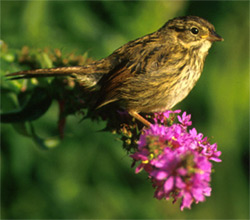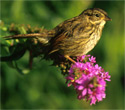How do I optimize images to send over email? Email is a perfect way for people to share pictures with one another. Unfortunately, pictures downloaded directly from a digital camera or from other sources may be
too large or too high-quality for Internet sharing. Large, high-quality pictures are perfect for printing out, but they take a long time to download over a 56k connection, and may be too large to easily view on a monitor. Resizing and compressing pictures so they can be easily sent by email, and are small enough to fit on most computer monitors, is a simple solution.
A. Selecting a Program The only graphics program that comes installed with Windows is Paint, which isn't a good choice for resizing and compressing images. However, there are a number of software programs, both commercial and freeware, that are very good for manipulating images. Some of these are Adobe Photoshop Elements, Adobe Photoshop Album, Mircosoft Photo Editor, Microsoft Picture It ! Photo Premium 9, Jasc Paint Shop Pro 8, Jan's Formati 11 and Irfanview.
B. Resizing Images Before emailing images to friends and acquaintances, it's a good idea to keep images small, usually no bigger than 600 pixels (dots) wide or 500 pixels tall. Shrinking images: - Allows pictures to be seen more easily
- Reduces a picture's file size considerably
- Allows for quicker downloads
Take the following example: Image 1 - 250x220 | Image 2 - 125x110 |  |  | File size: 23k | File size: 8k |
Image 1 is 250 pixels wide by 220 pixels tall. At its current JPG compression quality (see the next step for explanation), the file size is 23k. Image 2 is the same image shrunk down 50% (125 x 110), and at the same compression quality, it is nearly three times smaller (8k). Each program handles resizing images slightly differently. You should check your product's documentation for help.
C. Compressing Images While shrinking the size of an image is one way to lower its file size another is to use JPG compression to lower the quality of an image, reducing the file size. Take, for example, the following images: Image 1 - High Quality JPG (70%) | Image 2 - Low Quality JPG (1%) |  |  | File size: 23k | File size: 4k |
Both images are exactly the same size, but the file size for Image 1 is nearly 6 times larger (23k) than Image 2 (4k). If you look closely, however, you will notice that Image 1 is much sharper than the fuzzy, distorted Image 2. That's because Image 1 (70% quality) uses much less JPG compression than Image 2 (1% quality). The trick to compressing images is finding the lowest quality without distorting the image too much. Usually, 30-40% quality is acceptable. Most image programs allow you to save images as JPG and alter the quality level to reduce the file size. Check your product's documentation for help.
D. Regarding File Size How small should the file sizes of images be? Remember that Juno members (and most Internet users, for that matter) have a limited mailbox size (as low as 1 GB in many cases). 1 MB is approximately 1000k, so to avoid clogging mailboxes and to make downloads easier, try to keep images under 100k per attachment. To find out how big your file size is, just right-click the image icon / filename in Windows and select Properties. Look for Size or Size on Disk to determine your picture's file size. Remember: the bigger a file is, the longer it takes to upload to the Email on the Web in order to send it. You will notice a significant delay while trying to send large files with a modem connection, so keep your file sizes as small as you can to avoid this problem.
Back to the Main Menu
|